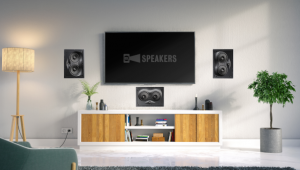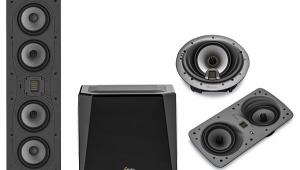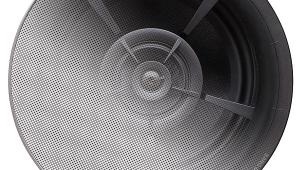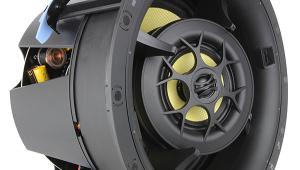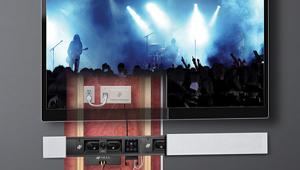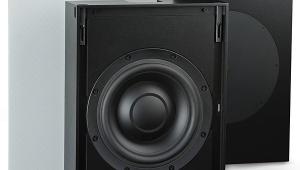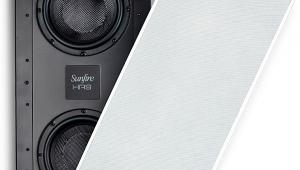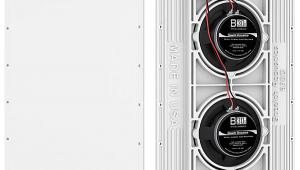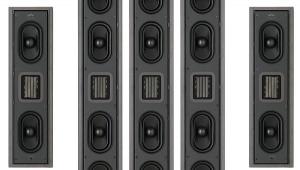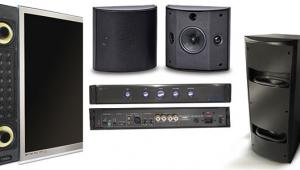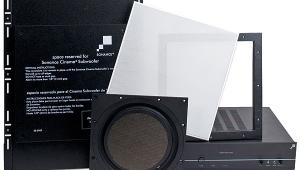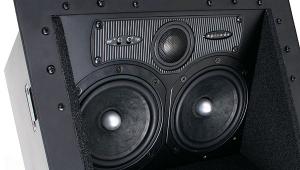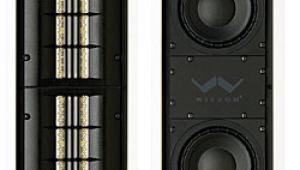these sound systems on here are more than amazing me and my friends all own speakers from here and we are yet to be disappointed from these products. If you want to see something that will not disappoint you go check out this TellCulvers survey and tell me your thoughts.
Opalum Flow.1010 On-Wall Speaker System page 2
 Since the STR-DA5800ES only has analog preouts (as is the case with all the AVRs I know of), I wasn’t able to take advantage of the digital audio inputs on the Opalum Hubs and turned to the analog inputs. Since the Hubs have an auto turn-on/-off feature, once they’re set on the correct input and the volume is turned all the way up, the remote controls can be put in a drawer and mostly forgotten—since there are no controls on the Hub, you’ll only need to reach for the remotes in the unlikely event that you need to make any adjustments after setup. Each Hub includes a subwoofer preout that automatically engages a non-adjustable 80-hertz crossover when a subwoofer is connected to the Hub. The crossover, though, only affects the single pair of speakers hooked up to that Hub; so I decided it made more sense to use the subwoofer output on the STR-DA5800ES instead. From that point on, the setup and calibration of the system were the same as they would have been for any AVR connected to external amps and normal speakers.
Since the STR-DA5800ES only has analog preouts (as is the case with all the AVRs I know of), I wasn’t able to take advantage of the digital audio inputs on the Opalum Hubs and turned to the analog inputs. Since the Hubs have an auto turn-on/-off feature, once they’re set on the correct input and the volume is turned all the way up, the remote controls can be put in a drawer and mostly forgotten—since there are no controls on the Hub, you’ll only need to reach for the remotes in the unlikely event that you need to make any adjustments after setup. Each Hub includes a subwoofer preout that automatically engages a non-adjustable 80-hertz crossover when a subwoofer is connected to the Hub. The crossover, though, only affects the single pair of speakers hooked up to that Hub; so I decided it made more sense to use the subwoofer output on the STR-DA5800ES instead. From that point on, the setup and calibration of the system were the same as they would have been for any AVR connected to external amps and normal speakers.
The center channel situation was a bit unusual in that, although the point-source array design of the Flow.1010 allows it to be used vertically or horizontally, the industrial designer was clearly thinking vertically. The neatly arranged rows of 2-inch drivers are positioned closer to the top of the Flow.1010 than to the bottom; so when you hang the speaker horizontally, you have to center the driver array in relation to the listening area rather than aligning the speaker cabinet itself. It’s a shame, too, because the look of the Flow.1010 is an important part of the speaker; and this alignment issue throws off the system’s visual symmetry—especially since the center channel isn’t centered under the TV. (Hanging a Flow.1010 horizontally is another time when having a template from Opalum would have been extremely helpful.) Logic seems to dictate that a dedicated center channel version should be added to the line, if only for aesthetics in multichannel installations.
Shootin’ in the Rain
At some point in the setup process, it began to feel like this unusual conglomeration might be more trouble than it was worth. But that was before I had a chance to listen to the completed system. The same delicate, pinpoint characteristics present in the mid and high frequencies of the Flow.1010s with music were just as engaging with movies; and the horizontal Flow.1010, when properly mounted, performed beautifully as a center channel in conjunction with its vertical left and right mates. In Jack Reacher, for instance, the dialogue was powerful and clear. In fact, the single horizontally mounted Flow.1010 is one of the strongest, most intelligible $1,250 center channel speakers I’ve listened to. There was no sense of constriction or other tonal changes as voices or sound effects, such as automobile traffic, traveled from one speaker to another across the front soundstage.

Perhaps most unexpected of all, the Stream.210 was a fantastic choice for the surrounds. During the climactic scenes at the quarry in the middle of a rainstorm when Reacher (Tom Cruise) is attempting to rescue Helen (Rosamund Pike), the lawyer who’s being held by “The Zec” (Werner Herzog’s best line: “We take what needs to be taken! That is what we do.”), there were moments when the rain made a perfect 360-degreee curtain around the room. Bullets from Cash’s (Robert Duvall) sniper shots from the top of the quarry’s ridge often did spectacular pingpong moves from front to back and side to side, and the believability was intensified by the Flow.1010s’ and the Stream.210s’ extremely nimble and light sonic character.
It’s no surprise to find that the 1.7-inch-deep Flow.1010 and 3.7-inch-deep Stream.210 aren’t capable of producing the full range of bass that’s important for an action movie, such as Gangster Squad. In addition to the requisite gunfire, chapter 6’s dark and dusty car chase also features several grenade explosions. Without a subwoofer, the explosions have lots of pop but little boom. When I added in a Legacy Audio Metro subwoofer, however, the system came alive with bass that shook the room; and the blend of the Metro sub with the Opalum speakers was totally seamless. Music plays a prominent role in the surround channels during the chase, and the Stream.210s did a marvelous job of being musical while at the same time keeping up with the fast-changing sound of cars whizzing by and rolling end over end down the road. All in all, it made for an extremely impressive system.
Conclusion
This project was an experiment of sorts. The Opalum Flow.1010 and Stream.210 weren’t designed specifically for use in a home theater, as is evident from the somewhat clunky way I had to adapt a single Flow.1010/Control Hub for the center channel. But the fact remains that the Flow.1010 is a spectacular on-wall speaker; and while the $2,499 system price seems a little steep at first, you have to take into account the fact that what you’re buying is a system that includes the amplification, a remote control, and a basic two-channel preamp. The same goes for the $999 Stream.210 system. That being said, I’m not sure I can recommend the setup of three Opalum Flow.1010s and two Stream.210s (with a subwoofer) as a go-to system.
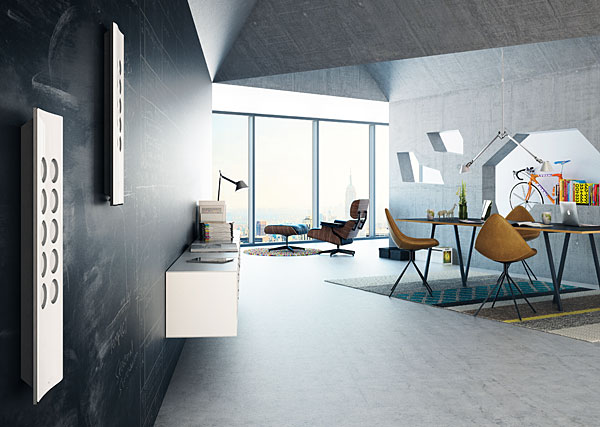
On the other hand, the imaging characteristics of the Opalum Flow.1010 are spectacular; and I’d definitely give three thumbs up for a 4.1-channel system using two of the Flow.1010s up front and a pair of the Stream.210s in the rear. It’ll provide a much better visual statement hanging on your walls, and the virtual center channel will still be strong and clear if you’re seated near the middle. (And since the speakers are amplified, you can keep the overall system cost down by using an affordable pre/pro, such as Emotiva’s $600 UMC-200.)
The bottom line is this: In terms of both appearance and sound quality, Opalum has created a phenomenal system with the Flow.1010. The low-voltage power/digital signal wiring with the ability to daisy-chain the speakers is a big bonus. Unfortunately, the system isn’t the most straightforward to set up, although upcoming modifications to the Control Hub (including IR and RS-232 control capability, Bluetooth connectivity, and auto input selection) will make things much simpler. The wonderful sound quality of the Flow.1010 (and Stream.210), however, certainly makes up for the more unusual aspects. If you’re looking for a system with as much in the way of style as it has in terms of sound quality—and you don’t mind a bit of complexity in the initial equipment connections and configuration—Opalum’s Flow.1010 and Stream.210 are fantastic choices when it comes to on-wall speakers; and they’re a perfect combo for the person who doesn’t need to have a center channel mounted above or below his/her flat-panel TV. On the other hand, I’m sure Opalum is aware of the multichannel setup issues associated with its current offering, and as a relative newcomer to U.S. shores, I doubt we’ve heard the last from the company and its high-tech take on the modern on-wall.
- Log in or register to post comments

